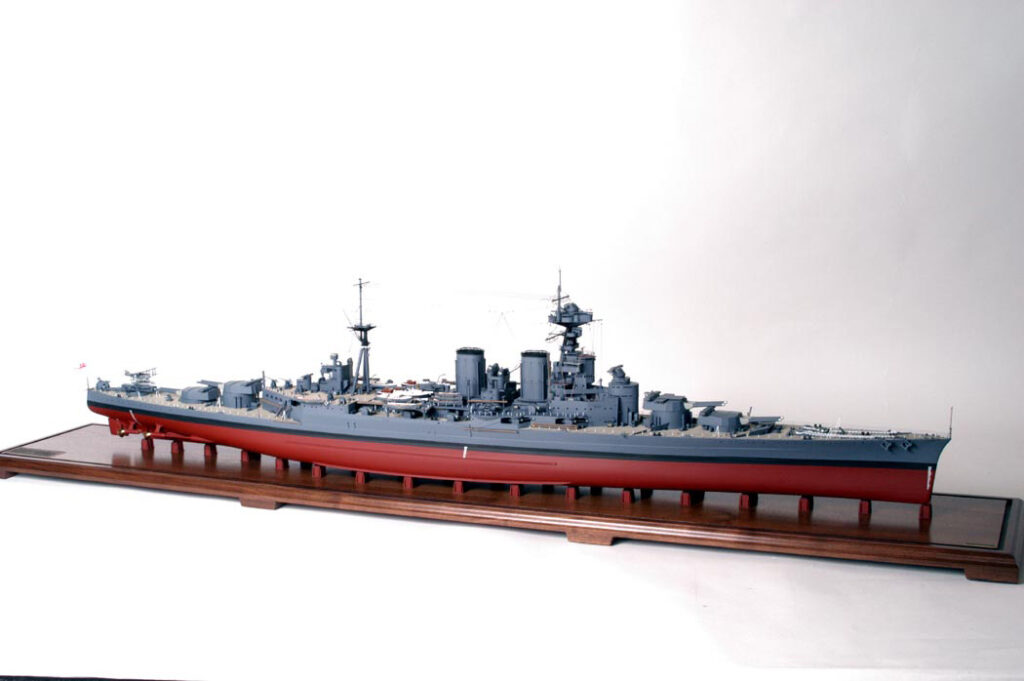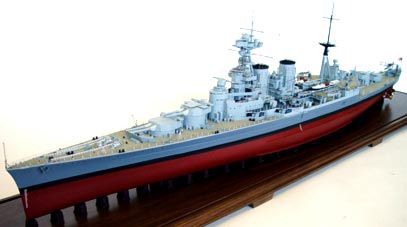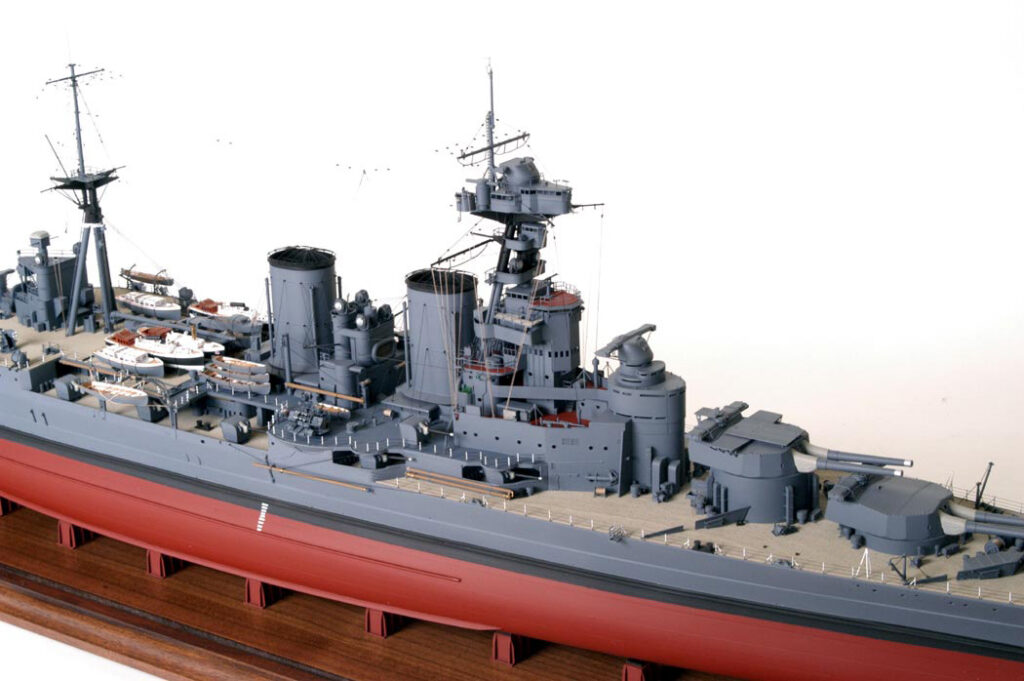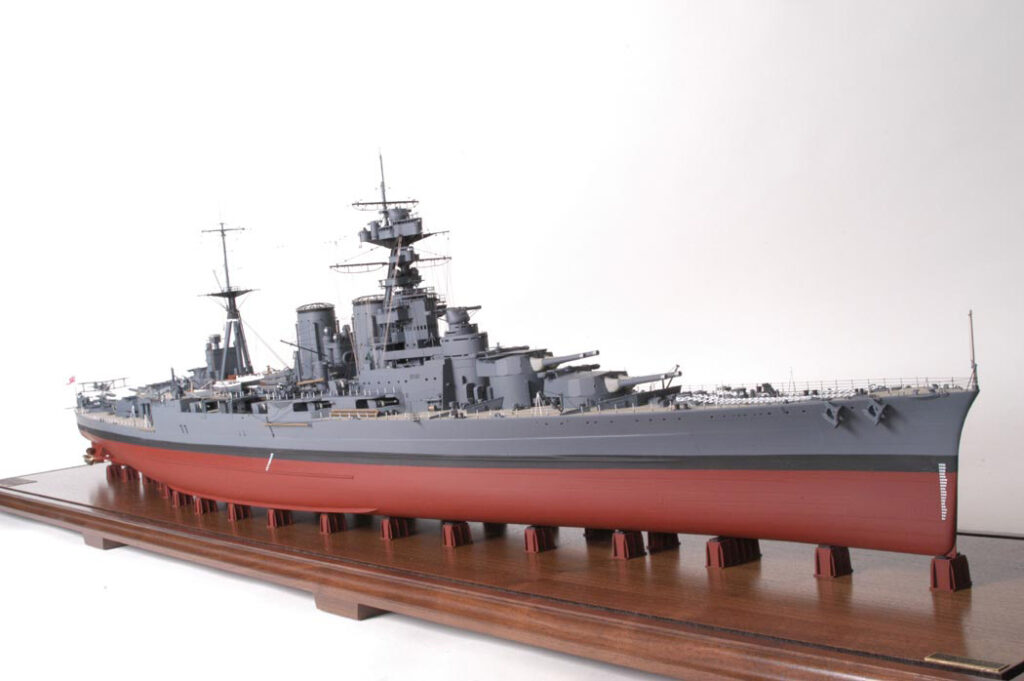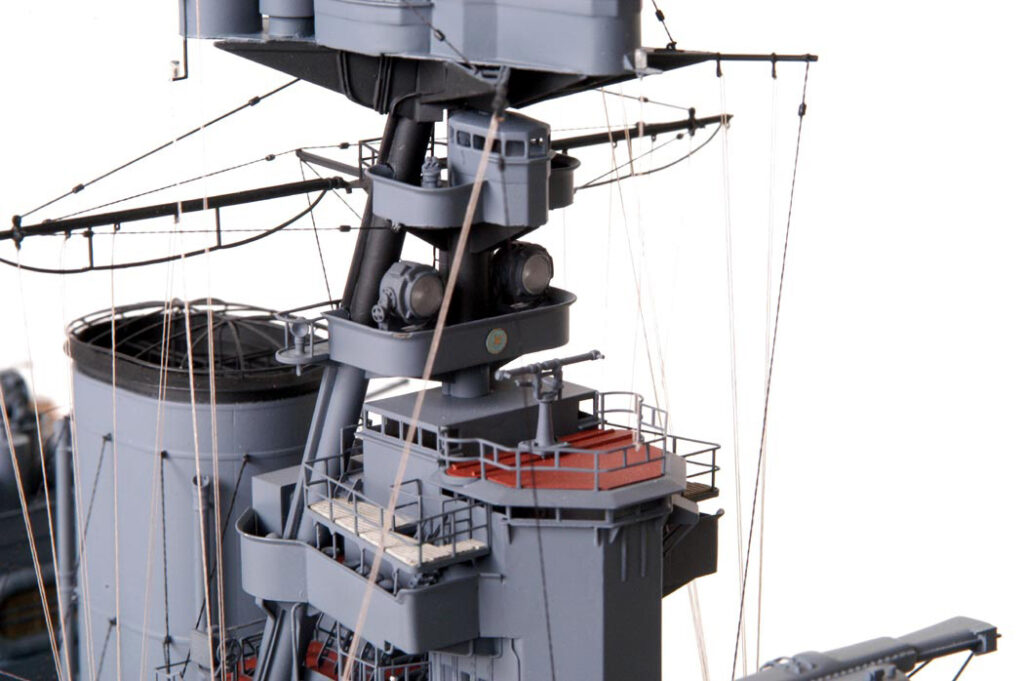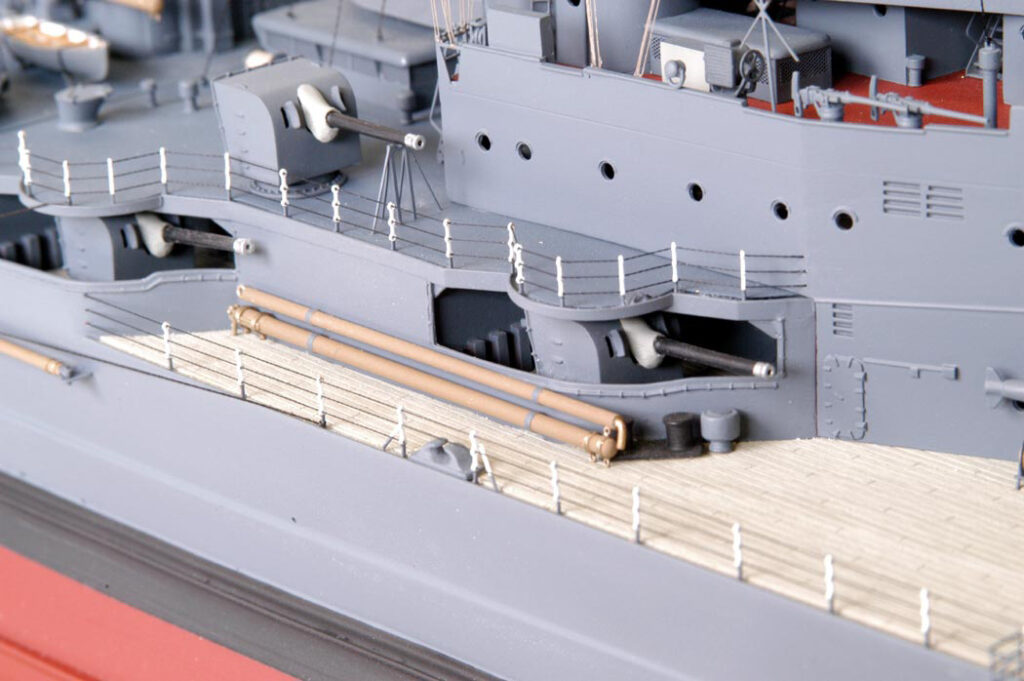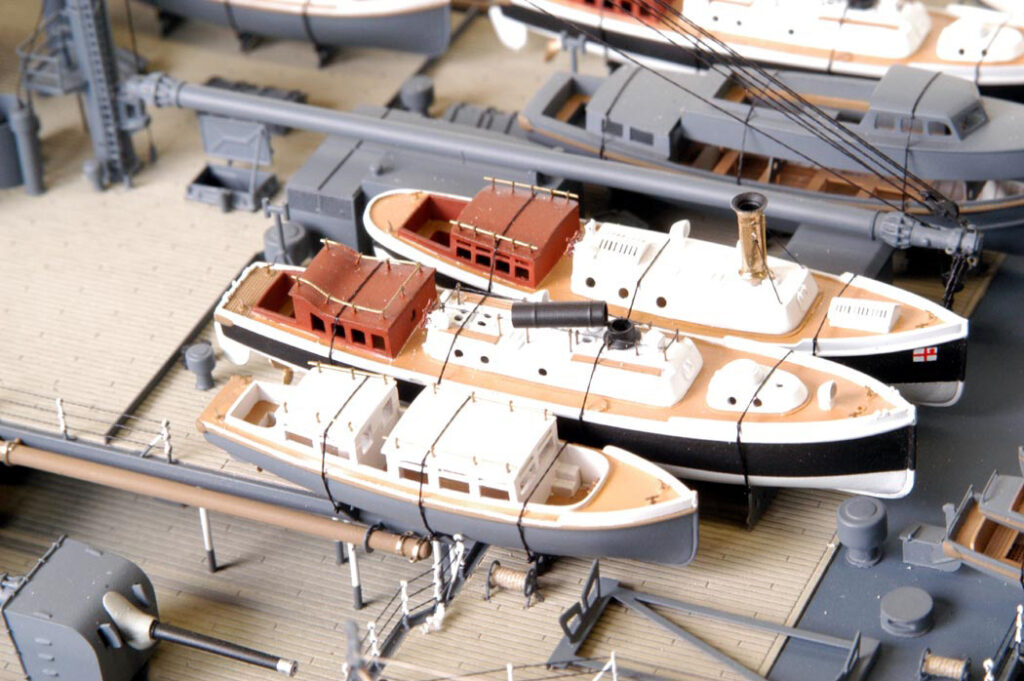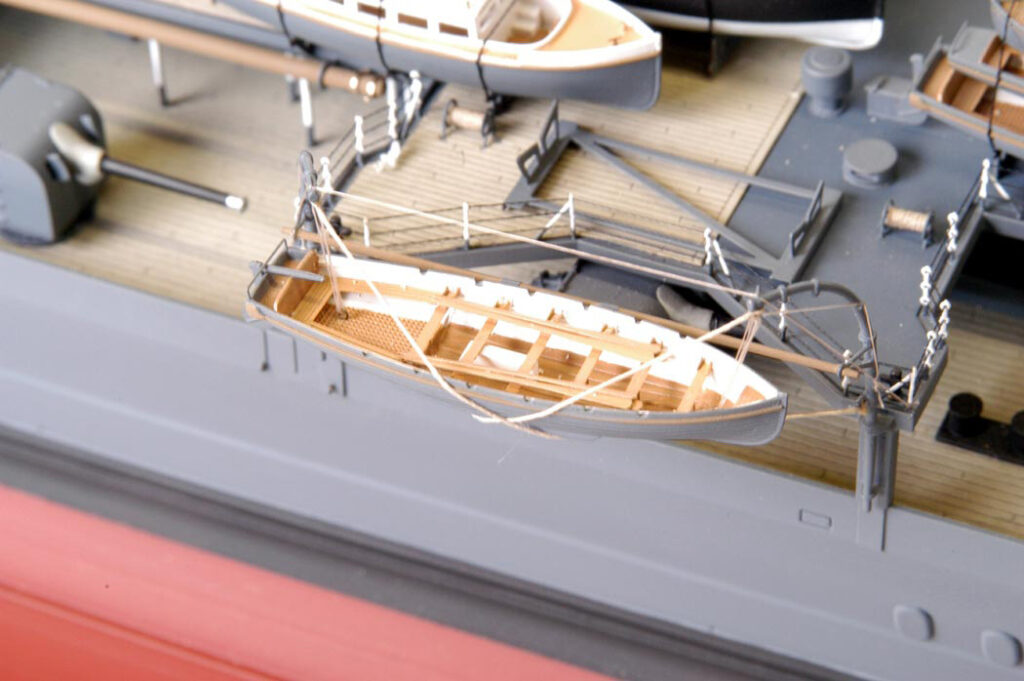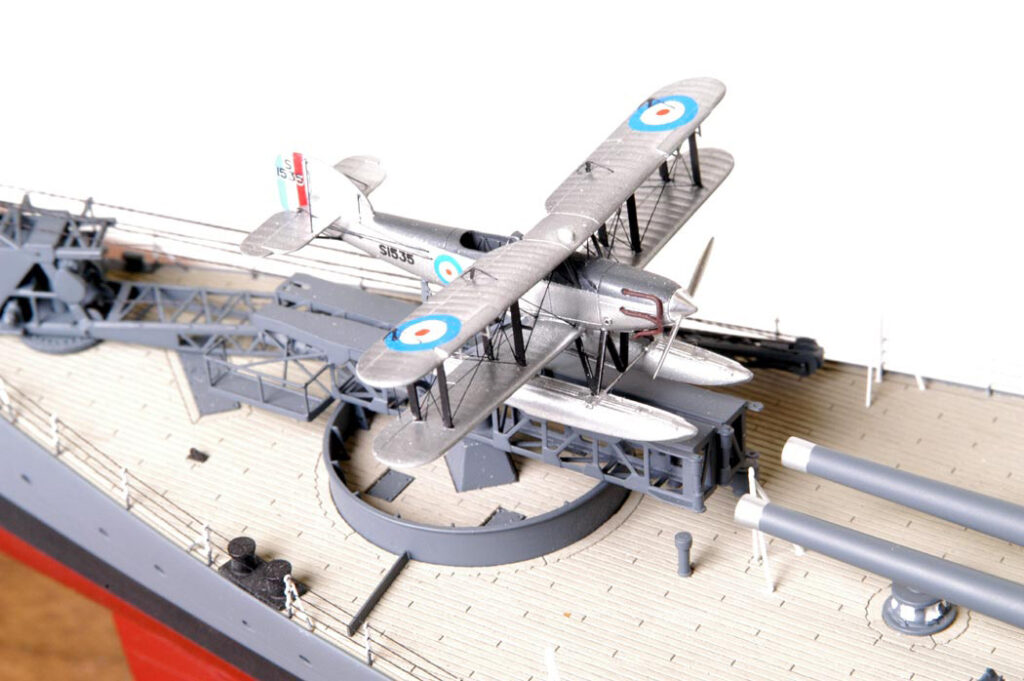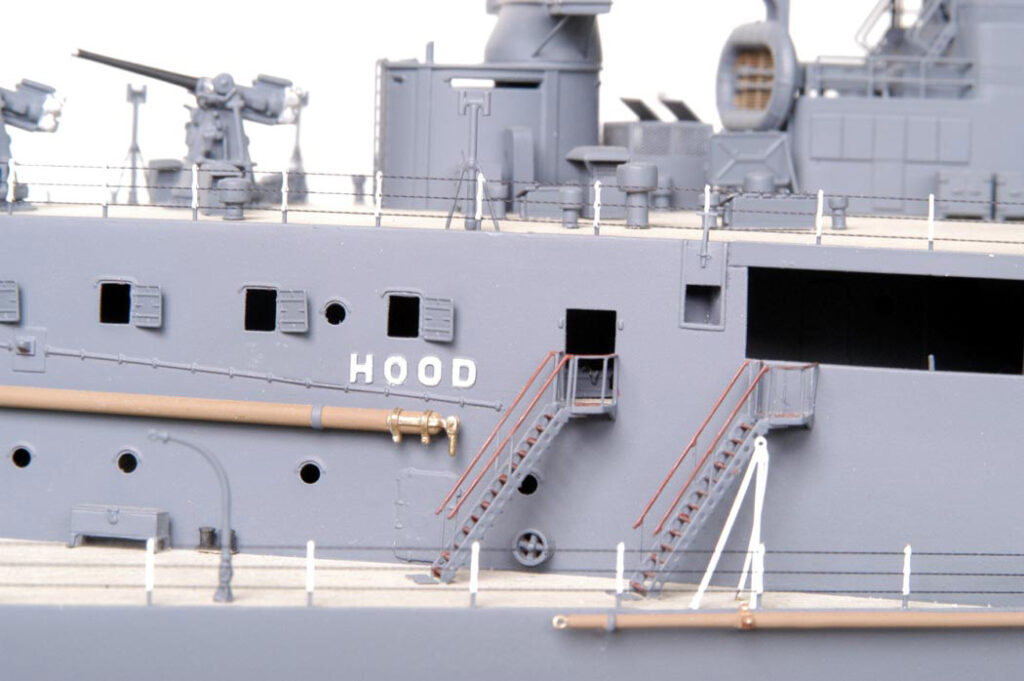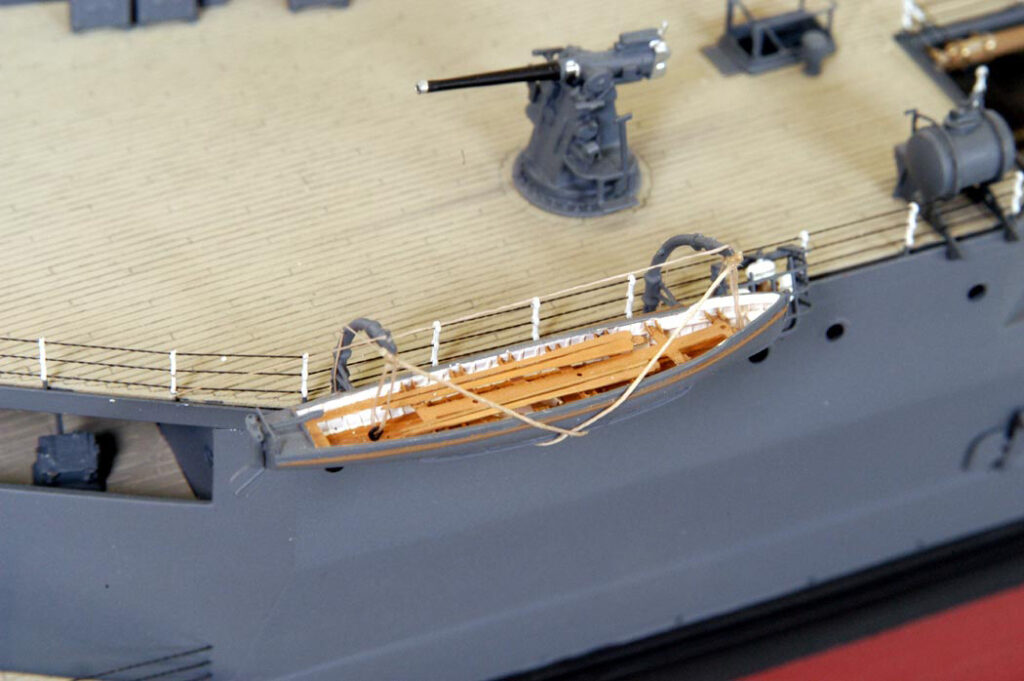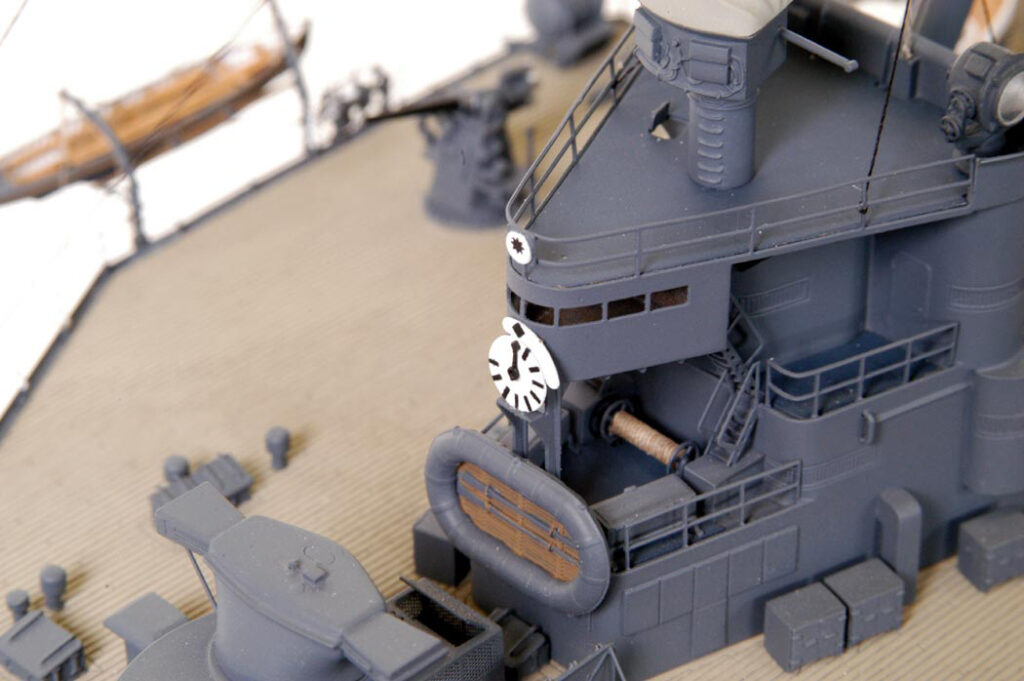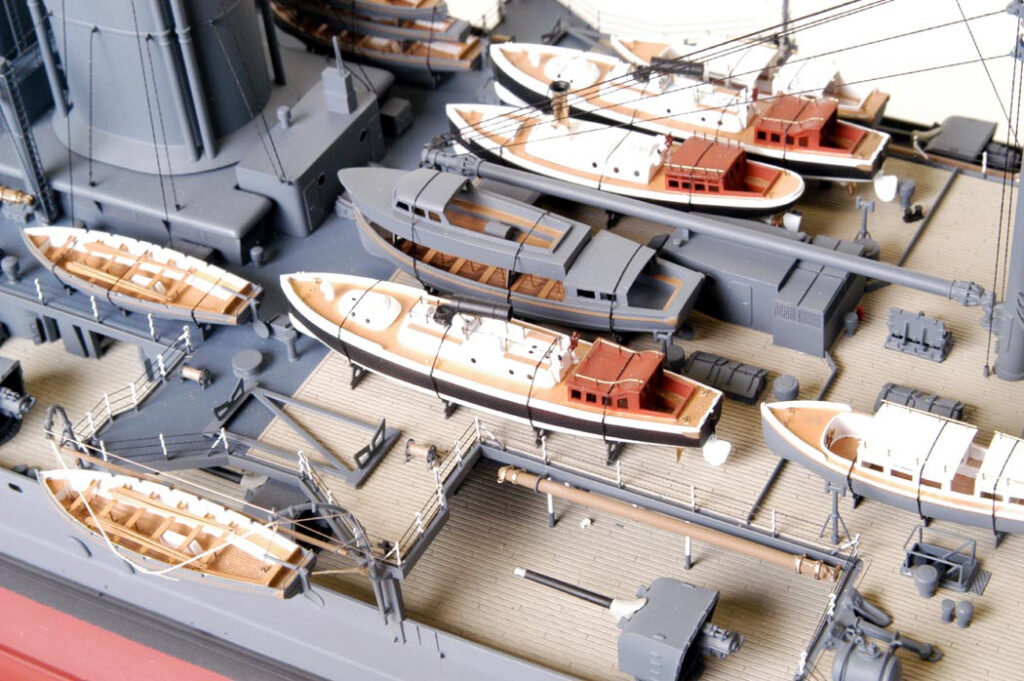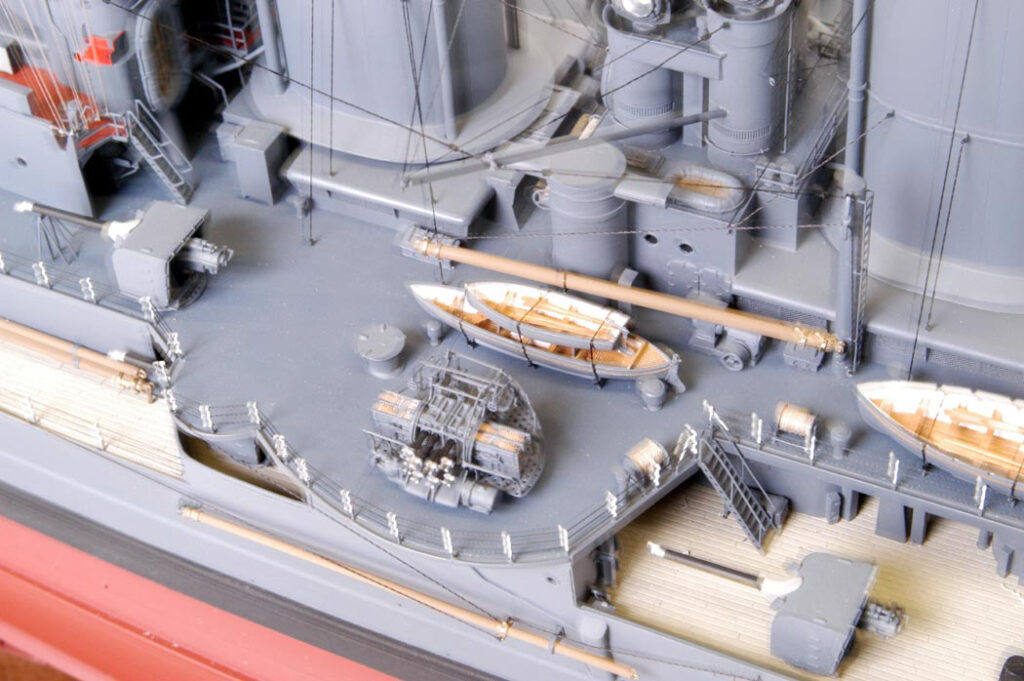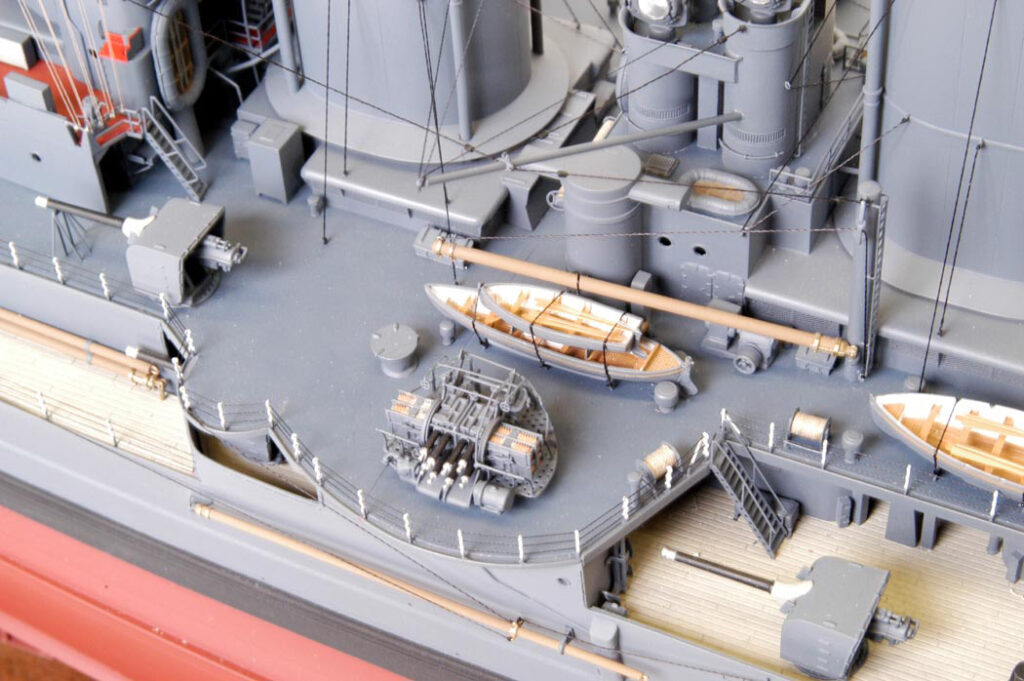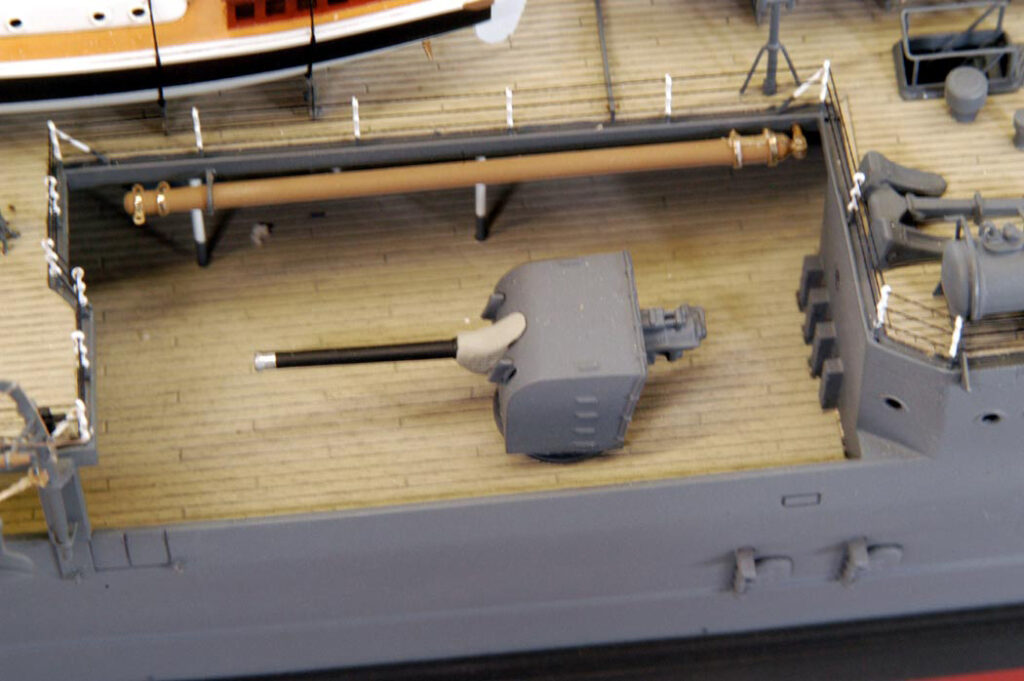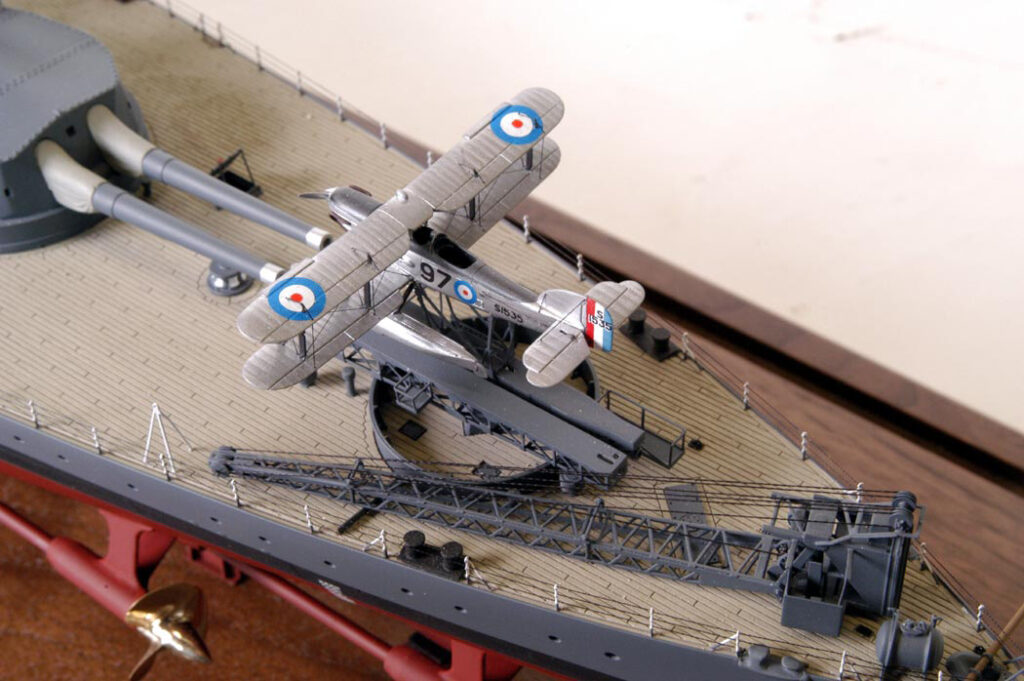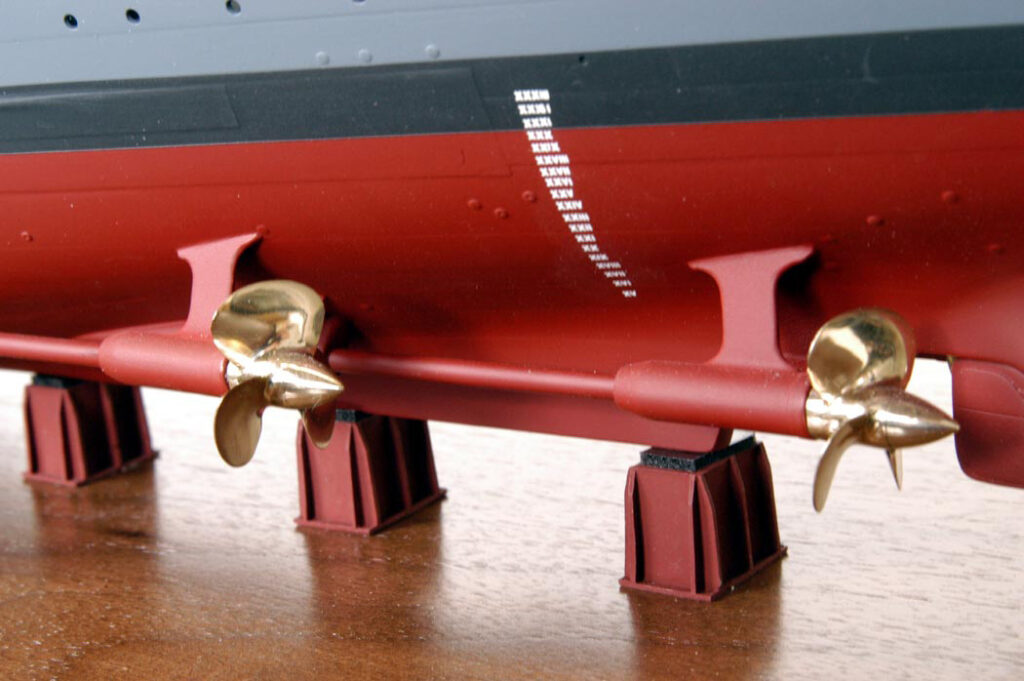Hood
Battlecruiser HMS Hood
- Scale: 1:192
- Release: 2002
- Limited Edition: 50
- Model Size: 54”L x 8”W x 12”H
- Base Type: Black Walnut
- Base/Case Size: 62”L x 8”W x 14”H
- Availability: Sold Out
Battlecruiser HMS Hood
Flagship of the Royal Navy, internationally recognized symbol of Britain’s supremacy in sea power, and for twenty years, the most powerful, most beautiful and most prestigious warship in the world was the Battlecruiser HMS Hood.
In 1906, the British Navy, under Admiral Sir John (Jackie) Fisher, launched the world’s first all-big-gun battleship, HMS Dreadnought—a ship so clearly superior to previous construction that all the major navies of the world set out to copy her. Two years later followed Fisher’s next brainchild, a longer, faster version of the battleship, but protected no better than a lightly-armored cruiser. These battle-cruisers reflected his theory that in action against lesser enemy warships, their speed would provide all the protection needed. Over the next seven (7) years, Britain built fifteen (15) of these ships; Germany responded with seven (7).
At first, Fisher’s concept appeared vindicated. Twice in 1914, British battle-cruisers engaged and defeated lighter German ships. Thereafter, however, they began to be used in the battle line against similarly armed opponents, whose plunging shells could easily penetrate their thin deck armor. On May 31, 1916, at the Battle of Jutland, three of them exploded with only seventeen of 3,300 crew members surviving. Among those lost with his flagship Invincible was Rear Admiral Sir Horace Hood.
On September 1, HMS Hood—the Royal Navy’s fourth ship of that name—was laid down at John Brown & Co., Ltd., Clydebank, Scotland. She was the first of a class of four (4) ships planned as a reply to rumored German construction. While the other three were later canceled, the Hood, redesigned with somewhat heavier protection in light of the lessons of Jutland, was completed in 1920. For two decades, the mighty Hood was the world’s largest, fastest, and most famous warship. After being assigned to protect British interests during the Spanish Civil War (1936–39), she served as flagship of the Home Fleet, covering the North Sea and Atlantic from the threat of German surface raiders from her base at Scapa Flow in Scotland’s Orkney Islands.
By this time, however, new battleships had been built and older ones modernized with improved armor and fire control. Accurate fire could be opened at much longer ranges, from which shells would arrive at increasingly steep angles. With her horizontal protection now clearly inadequate and her speed reduced to 29 knots for want of an overhaul, the Hood was no longer a match for the ships she might have to face in battle. Plans for a three-year modernization were formulated in 1938, but their high cost and the onset of World War II delayed their scheduled implementation until 1942.
In May 1941, the latest 30-knot German battleship Bismarck and cruiser Prinz Eugen sortied toward the North Atlantic, intent on destroying merchant convoys. Battle-worthy or not, the Hood and the new, untested battleship Prince of Wales were sent in pursuit. Four ships met in the early morning of May 24, in the Denmark Strait between Iceland and Greenland. Within minutes, the Hood found herself in trouble as the Prinz Eugen’s second salvo hit her amidships, causing a large fire. Then the Bismarck’s fifth salvo hit again and the Hood’s after magazines detonated. Under a towering mushroom cloud, her bow rose high into the air as she folded in two and sank, taking with her all but three of her crew of more than 1,400. Her loss staggered Britain much as the Japanese attack on Pearl Harbor shocked America 6 1/2 months later.
About the Model…
Fine Art Models has built this limited edition, HMS Hood ship model in a scale of 1:192 with exacting detail, with the Sopwith reconnaissance plane on the rear deck, the most detailed miniature airplane ever built.
Each Hood model is built by a team of eight (8) of the most skilled craftsmen in the world with more than 500 man hours just to assemble. Computers were used to generate exact scale drawings from the original plans. All of the materials used to construct the ship meet and/or exceed museum quality standards including a space age, high definition hull, deck and a photo-etched brass superstructure. In addition, all of the paint used is custom-made and impervious to ultra-violet light. As with all Fine Art Models, the HMS Hood scale model comes complete with a Black Walnut base and leaded glass display case.
